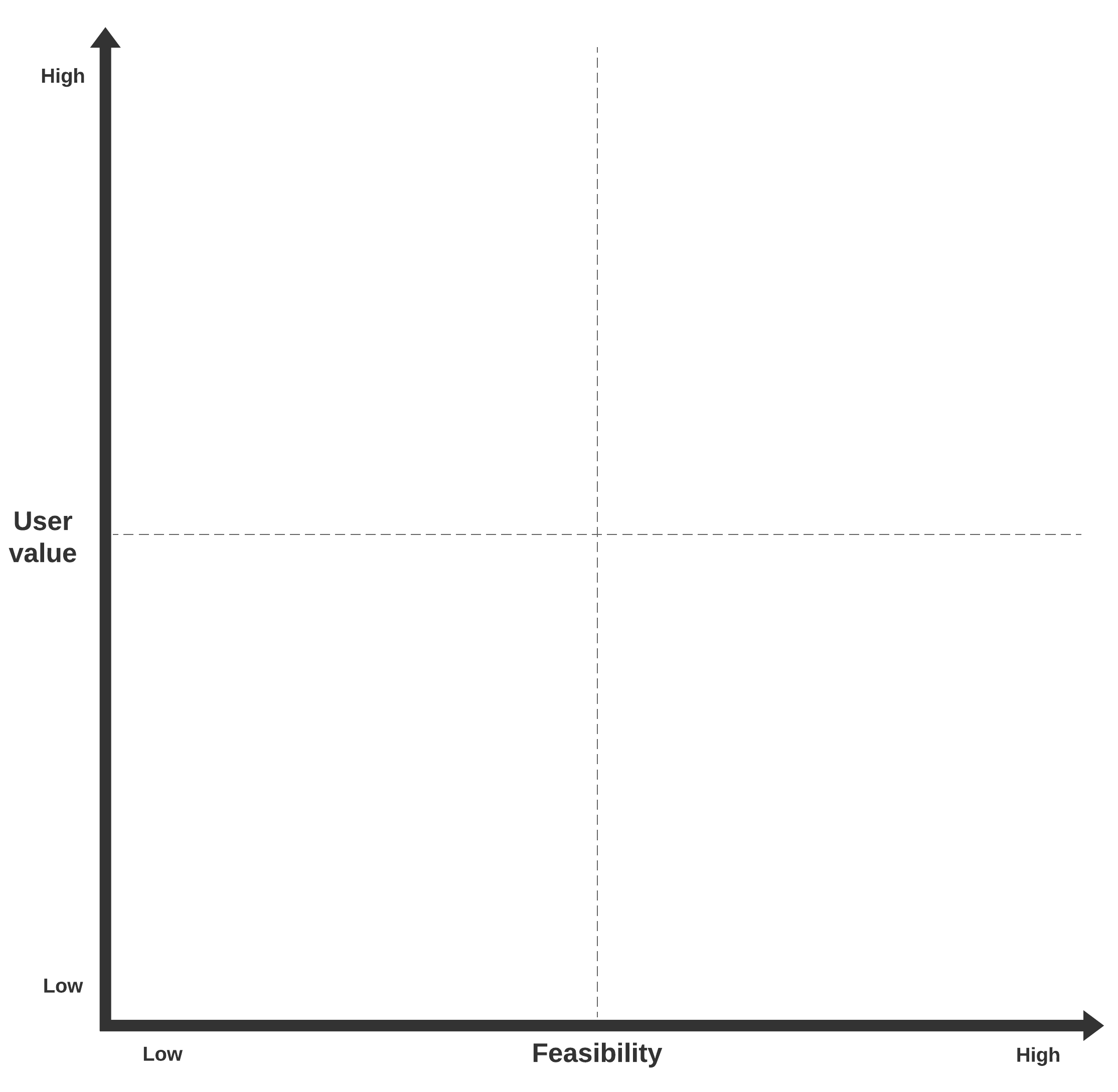
Make the most of any digital transformation strategy
Reading time: about 6 min
The pressure for corporations to keep pace with technology and prioritize digital transformation projects has never been greater. From the nonstop blitz of new competitors entering the market to the rising consumer demand for more cutting-edge products, expectations will only continue to increase.
Businesses may differ by size, industry, or technological sophistication. But at some point, each must address the need for a digital transformation strategy (and their ability to make it a reality).
Without a clear understanding of how to prioritize projects, the digital transformation process can be overwhelming. Fortunately, you can use various project prioritization methods to move your digital transformation projects forward.
How to prioritize projects for digital transformation
Almost 90% of companies have adopted a digital-first business strategy (or plan to do so).
Whether it’s a desire to improve business processes, work cultures, or the customer experience, there are many reasons to embark on digital transformation initiatives. Most are summarized as an effort to add more value and meet shifting market requirements. Other times, it’s a reset.
Of the companies yet to start their digital transformation process, 59% fear it might be too late. The good news: it isn’t too late yet. But it is the perfect time to get serious about prioritizing your digital transformation.
When it comes to prioritizing the digital transformation framework at your organization, there are a number of project prioritization methods to consider.
Establish one main goal for the digital transformation process
The key to seeing your digital transformation projects reach fruition? Having a clear end goal in mind.
Focusing on one main goal will make the digital transformation process less overwhelming.
To determine the main focus of your digital transformation initiative consider what your organization is lacking. If limited to only a single focus, which end goal does your business gravitate to the most?
- Want to optimize processes and operations? This means changing on-premises software for cloud-based apps or retooling outdated procedures to gain new efficiencies.
- Want to multiply the competitive advantage? Pursuing digital transformation drives the discovery of fresh strategies and data insights to help you disrupt your industry.
- Want to increase top-line business growth? The ability to integrate services at scale or increase gross revenue takes know-how that only a digital transformation can provide.
- Want to improve the customer experience? Tailor your digital transformation strategy to focus on user-friendly mobile apps or new tools that improve employee interactions with customers.
Once you’ve narrowed it down to one main goal, it’s time to begin the digital transformation.
Remove initiatives from the backlog that don’t align with your goal
Not only is it important to rely on project prioritization methods to get your organization’s digital transformation initiatives on track, it’s also imperative to eliminate waste wherever possible.
Keep your end goal in mind throughout the entire process. Use it as a tool to quickly judge whether or not an initiative really makes sense in the grand scheme of your organization. Some initiatives might be good ideas in the long run, just not the best options to pursue at the moment.
Once you’ve removed those initial digital transformation projects from the backlog that aren’t in line with your main goal, the next step involves prioritizing your short list even further.
Prioritize digital transformation projects by value and effort
One of the most effective project prioritization methods is to filter digital transformation initiatives according to their value and effort. Value can be measured by how valuable the initiative is for customers or how valuable the initiative is for the organization itself.
Whether for customers or the organization, effort is a measure of an initiative’s relative difficulty. To visualize how to prioritize projects by value and effort, organize your initiatives on a grid using Lucidchart.
Start with one for the digital transformation initiatives you’ve come up with for customers:

- Draw a grid with a vertical axis and horizontal axis to create four quadrants.
- At one end of the vertical axis, express value by most. On the other end by least.
- At one end of the horizontal axis, express effort by easy. On the other end by hard.
- Prioritize your first initiative along the vertical axis. How valuable is to customers?
- Prioritize the same initiative along the horizontal axis. Is it easy or is it hard to do?
Place your initiative into one of the four quadrants of the grid. Repeat the process until all of your digital transformation initiatives for customers are plotted. To determine which initiatives your company will pursue first, select the one that falls into the quadrant defined as easy and the most valuable.
These are the quick wins of your organization’s digital transformation strategy. Next, the ones that fall within the quadrant of hard and the most value will take more time and effort to complete. Those defined as easy with the least value can go into the backlog for now. Any initiatives in the range of hard and least value should be removed or put on hold until your other initiatives are finished.
Whenever a new initiative is under consideration at your organization, you can always use these project prioritization methods to see which ones best address your digital transformation goals.
Assign someone to guide the digital transformation strategy
Streamlining your project prioritization process is only part of becoming a digital-first company.
After prioritizing all of the initiatives in your digital transformation strategy, your organization is in a better position for success. However, one of the most important aspects of initiating your organization’s digital transformation is to find the right person to help lead the charge.
Recent stats suggest an overwhelming 87% of companies think digital will disrupt their industry. Yet only 44% are prepared for a potential digital disruption, possibly from the lack of leadership.
Whether it's banking, retail, media, or IT, businesses today need leaders who will help champion a digital transformation revolution throughout their organization. Often, this takes more than tech savvy alone. It requires emotional intelligence, a change-oriented mindset, and marketing skills.
Although extensive experience in technology is important, being an effective Chief Digital Officer requires creative thinking and a holistic view of the business. It means being someone who can help rally other organizational leaders, decision makers, and stakeholders around their digital vision and a good understanding of your existing digital technologies. And it’s not just about identifying opportunity.
Leaders who successfully champion digital transformation strategy must know how to prioritize projects and avoid the types of possible setbacks that occur when trying to change too quickly.
For whoever leads the digital transformation initiatives at your business, possessing a holistic viewpoint will be crucial to faithfully overseeing the many projects, teams, and various processes involved. By working to establish a clear digital roadmap, you help ensure the company’s future.
This is what it means to prioritize your digital transformation projects. Taking the time to follow the steps, understand what feels right for your business, and work to make it a reality.

Bringing clarity to digital transformation is easier than you think.
Find out howAbout Lucidchart
Lucidchart, a cloud-based intelligent diagramming application, is a core component of Lucid Software's Visual Collaboration Suite. This intuitive, cloud-based solution empowers teams to collaborate in real-time to build flowcharts, mockups, UML diagrams, customer journey maps, and more. Lucidchart propels teams forward to build the future faster. Lucid is proud to serve top businesses around the world, including customers such as Google, GE, and NBC Universal, and 99% of the Fortune 500. Lucid partners with industry leaders, including Google, Atlassian, and Microsoft. Since its founding, Lucid has received numerous awards for its products, business, and workplace culture. For more information, visit lucidchart.com.
Related articles
How to reduce IT complexity during digital transformation
In this article, we discuss the IT complexity and challenges you might face as you implement your digital transformation initiative.
Make your digital transformation user focused
Let’s dig into why understanding how a tech-savvy customer base interacts with their mobile devices can help you to transform your business model to meet their expectations and provide a user-focused experience.
